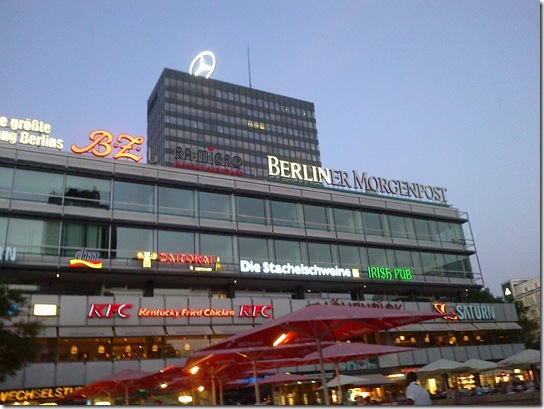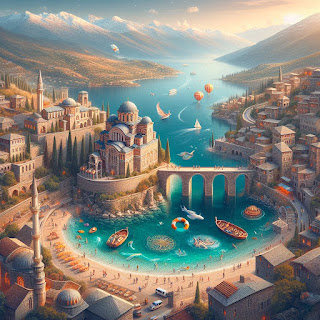Venice: 118 Small Islands Separated by Canals and Linked by Bridges
Venice: A Water Wonder
Venice, the "Floating City," is a breathtaking marvel nestled in the northeast of Italy. Renowned for its rich history, architectural wonders, and romantic allure, Venice is a unique destination unlike any other in the world. This article delves into the captivating tale of Venice, its origin, evolution, and the ingenious engineering that has enabled it to thrive as a city composed of 118 small islands separated by canals and interconnected by bridges.
------Watch Videos of Venice-----
Historical Origins
The story of Venice dates back over a thousand years. Its roots can be traced to the early 5th century when numerous inhabitants from the mainland sought refuge from invading barbarian tribes. Fleeing these tumultuous times, they sought safety in the nearby marshlands of the Adriatic Sea. Over time, these refugees laid the foundations of what would evolve into one of the most enchanting cities the world has ever known.
The Rise of a Maritime Power
As the Roman Empire declined, Venice found itself gaining prominence through maritime trade. Its strategic location on the Mediterranean Sea facilitated thriving trade routes with the Middle East and Europe. Venetian merchants soon became renowned for their prowess in commerce and diplomacy, leading to a significant increase in wealth and power.
The Birth of Venice's Unique Urban Landscape
Venice's topographical peculiarity stems from its geographical setting. Located on the Venetian Lagoon, the city is built on 118 small islands, which were formed by the deposition of silt from the mainland rivers. Over the centuries, these islands were linked together with bridges, and the extensive canal system was established to navigate and connect the city.
Challenges of Constructing on Water
Building a city on water presented numerous engineering challenges. Venice's architects and engineers had to develop innovative solutions to ensure the stability and longevity of its structures. Wooden pilings were driven deep into the marshy ground to support the foundations of buildings. Stones from distant quarries were brought in to construct the city's iconic palaces, churches, and other edifices.
The Venetian Canal Network
The labyrinthine canal network is one of the most recognizable features of Venice. These waterways serve as the city's streets, and watercraft replace conventional automobiles. The Grand Canal, the main thoroughfare, winds its way through the city, flanked by grand palaces, bustling markets, and ancient bridges. The canals provide essential access to various parts of the city and have played a vital role in shaping Venice's unique character.
The Magnificent Bridges of Venice
Venice boasts a wide array of bridges, each possessing its own distinct charm and history. The Rialto Bridge, an architectural masterpiece, is one of the oldest and most famous structures in the city. Other noteworthy bridges include the Bridge of Sighs, known for its romantic aura, and the Accademia Bridge, offering stunning views of the Grand Canal.
Venetian Architecture: A Fusion of Styles
Venetian architecture reflects an amalgamation of diverse styles due to the city's extensive trade connections. Gothic, Byzantine, Renaissance, and Baroque elements can be observed throughout Venice's buildings, showcasing the city's rich cultural heritage. The iconic St. Mark's Basilica and the Doge's Palace are prime examples of the city's magnificent architectural legacy.
The Venetian Gondolas: Symbol of Romance
No visit to Venice is complete without a ride on a gondola. These iconic, black wooden boats, guided by skilled gondoliers, have long been associated with romance and serenades. Although primarily used by tourists today, gondolas were once the primary mode of transportation for the Venetian elite.
Venice's Cultural Heritage
Beyond its architectural wonders, Venice is a hub of artistic and cultural brilliance. The city has nurtured some of history's most renowned artists, such as Titian, Tintoretto, and Bellini. The Venetian Carnival, with its elaborate masks and costumes, is a vibrant celebration that attracts visitors from around the globe.
Environmental Challenges
Despite its allure, Venice faces considerable environmental threats. Rising sea levels and land subsidence pose serious risks to the city's stability and preservation. Several measures, such as the MOSE project (Modulo Sperimentale Elettromeccanico), have been undertaken to protect Venice from flooding, but the city remains vulnerable to the impacts of climate change.
Thus, Venice's 118 small islands separated by canals and linked by bridges encapsulate a story of resilience, ingenuity, and cultural brilliance. Its unique urban landscape, architectural wonders, and rich history continue to fascinate visitors from all corners of the globe. However, Venice's survival faces challenges, both environmental and economic, which necessitate thoughtful preservation efforts for this enchanting city to remain a timeless symbol of human achievement and creativity. As we appreciate its beauty and marvel at its engineering feats, let us also cherish and protect Venice as a shared global heritage.









Comments
Post a Comment